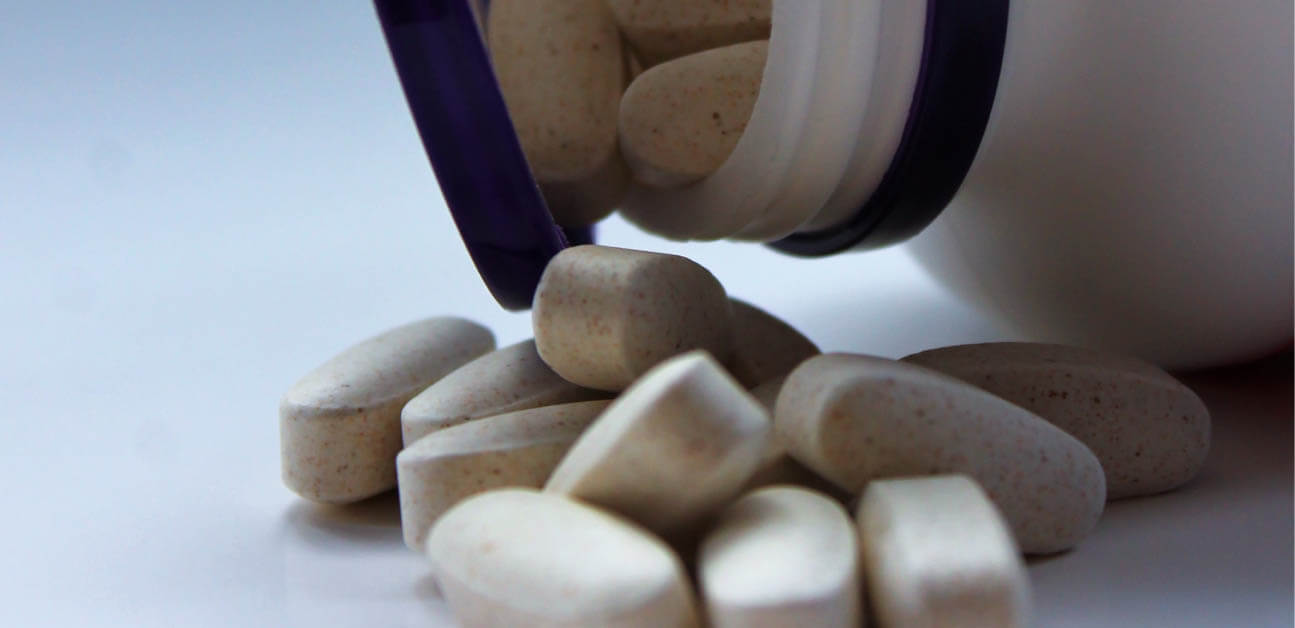Beta-Alanine for Cyclists: Will It Make You Faster?

Beta-alanine is a popular workout supplement that promises to increase exercise capacity and reduce muscle fatigue. But will it make you a faster cyclist? This article will cover what it is, what it’s good for, and if cyclists should supplement with beta-alanine.
For more information on nutrition check out Ask A Cycling Coach Ep 198.
What is Beta-Alanine?
Beta-alanine is a non-essential amino acid, meaning that your body can make it and doesn’t solely rely on dietary intake. Together with l-histidine, it is synthesized into carnosine in your skeletal muscles—carnosine plays a significant role in regulating muscle pH.
The importance of carnosine comes down to the anaerobic energy system. During moderate to high-intensity workouts, your body anaerobically converts glucose into ATP and pyruvate. Then some of that pyruvate is used to make more ATP. As a result of converting pyruvate to ATP, lactate and hydrogen ions (H+) are produced. The more you ride at and above lactate threshold, the more hydrogen ions you’ll create that further reduce muscle pH, causing that all too familiar muscle-burning sensation. Carnosine helps to buffer those hydrogen ions.
So what about beta-alanine? It is not only used to synthesize carnosine, but it’s also rate-limiting. That means that beta-alanine availability limits the amount of carnosine your body produces. If you have more beta-alanine on board, you can create more carnosine. It’s for this reason that many athletes supplement with it.
Is Beta-Alanine Good for Cycling?
If beta-alanine can indirectly help buffer muscle acidosis, it stands to reason that it would be beneficial for cycling under specific conditions. Research is still ongoing, but mostly it’s been shown to help in short, intense efforts. Additionally, several studies show that supplementing with beta-alanine can delay the onset of neuromuscular fatigue. In particular, one study found that beta-alanine helped increase peak sprint power by 11-15% at the end of a simulated road race.
Adaptive Training
Get the right workout, every time with training that adapts to you.
Check Out TrainerRoadHowever, the research is lacking in observing the effects of it for efforts longer than thirty minutes. The end goal of supplementation is to increase muscular concentrations of carnosine and reduce muscle pH. That means the reported benefits are mostly limited to the short working duration of the anaerobic energy system. Overall, the results suggest that beta-alanine may improve the effects of high-intensity interval training and reduce neuromuscular fatigue, which would be welcome by most cyclists.
How to Supplement with Beta-Alanine
Your body naturally makes beta-alanine from organic compounds called pyrimidine nucleotides. Additionally, you can intake it by digesting food rich in carnosine like meats, fish, and poultry. For this reason, athletes following a vegan diet typically have much lower concentrations of carnosine. Wait, if the end goal of beta-alanine is to increase carnosine, why not just supplement with that? The biggest reason is that the body does not easily absorb carnosine, so it’s more effective to use beta-alanine.
Before taking any supplement, it’s always a good idea to check-in with your doctor or medical professional. Generally, beta-alanine is considered safe, but it can cause skin tingling called paraesthesia. Typically this side effect is amplified by higher doses. Smaller doses or slow-release tablets can reduce this. In the United States, supplements and vitamins are largely unregulated, so if you compete in events, you’ll want to find a supplement that has been certified by NSF International or Informed Sport.
Beta-alanine is a popular ingredient in many pre-workout supplements, but that probably isn’t the best way to use it. Pre-workout mixes usually contain a combination of caffeine and other supplements. Beta-alanine isn’t something that you can take one time and reap the benefits. Increasing intramuscular carnosine to its highest levels requires taking a supplement for about fourteen days.
Most studies recommend 2-4 grams daily, but you’ll need to load it for at least a week with two doses per day when starting. Since it can cause uncomfortable skin tingling, it helps to divide the amount throughout the day or use a slow-release tablet. To keep carnosine levels high, you have to ingest beta-alanine chronically.
Beta-Alanine for Cyclists Research
Beta-alanine is a reasonably well-researched supplement. The research in endurance sports is somewhat limited, cycling in particular. Listed below are several studies that you can read through for more information.
- Beta-alanine Improves Sprint Performance in Endurance Cycling
- Role of Beta-alanine Supplementation on Muscle Carnosine and Exercise Performance
- Effect of Combined Beta-alanine and Sodium Bicarbonate Supplementation on Cycling Performance
- International society of sports nutrition position stand: Beta-Alanine
- Effects of Beta-Alanine on Muscle Carnosine and Exercise Performance: A Review of the Current Literature
- Beta-alanine Supplementation Augments Muscle Carnosine Content and Attenuates Fatigue During Repeated Isokinetic Contraction Bouts in Trained Sprinters
Should Cyclists Take Beta-Alanine?
Beta-alanine can increase carnosine concentrations in your muscles and therefore help buffer muscle acidosis and reduce fatigue. For most, this supplement for cyclists offers a few rewards without a significant downside—other than skin tingling. The good news is that beta-alanine supplementation has shown some performance benefits and is relatively safe. However, as with many supplements, the effects can vary from person to person. Just remember that if you choose to supplement with beta-alanine, it takes time to be effective and must be taken continually.